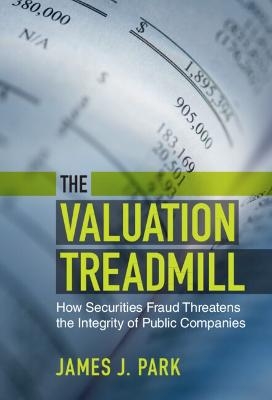
The Valuation Treadmill
How Securities Fraud Threatens the Integrity of Public Companies
Seiten
2022
Cambridge University Press (Verlag)
978-1-108-83718-7 (ISBN)
Cambridge University Press (Verlag)
978-1-108-83718-7 (ISBN)
This book analyzes case studies of paradigmatic securities frauds to show how market pressure to deliver short-term results creates incentives for public companies to deceive investors. The book will engage scholars and students of business law, as well as general readers interested in business culture and white-collar crime.
Public companies now face constant pressure to meet investor expectations. A company must continually deliver strong short-term performance every quarter to maintain its stock price. This valuation treadmill creates incentives for corporations to deceive investors. Published more than twenty years after the passage of Sarbanes-Oxley, which requires all public companies to invest in measures to ensure the accuracy of their disclosures, The Valuation Treadmill shows how securities fraud became a major regulatory concern. Drawing on case studies of paradigmatic securities enforcement actions involving Xerox, Penn Central, Apple, Enron, Citigroup, and General Electric, the book argues that corporate securities fraud emerged as investors increasingly valued companies based on their future performance. Corporations now have an incentive to issue unrealistically optimistic disclosure to convince markets that their success will continue. Securities regulation must do more to protect the integrity of public companies from the pressure of the valuation treadmill.
Public companies now face constant pressure to meet investor expectations. A company must continually deliver strong short-term performance every quarter to maintain its stock price. This valuation treadmill creates incentives for corporations to deceive investors. Published more than twenty years after the passage of Sarbanes-Oxley, which requires all public companies to invest in measures to ensure the accuracy of their disclosures, The Valuation Treadmill shows how securities fraud became a major regulatory concern. Drawing on case studies of paradigmatic securities enforcement actions involving Xerox, Penn Central, Apple, Enron, Citigroup, and General Electric, the book argues that corporate securities fraud emerged as investors increasingly valued companies based on their future performance. Corporations now have an incentive to issue unrealistically optimistic disclosure to convince markets that their success will continue. Securities regulation must do more to protect the integrity of public companies from the pressure of the valuation treadmill.
James J. Park is Professor of Law at UCLA School of Law. He writes and teaches in the areas of securities regulation and corporate law. He was an editor of Can Delaware Be Dethroned? Evaluating Delaware's Dominance of Corporate Law (with Iman Anabtawi, Stephen Bainbridge, & Sung Hui Kim, 2018).
1. Introduction; 2. Xerox and the Pressure to Meet Projections; 3. Penn Central and the Decline of Managerialism; 4. Apple and the Controversy of Projections Litigation; 5. Enron and Sarbanes-Oxley; 6. Citigroup and the Financial Crisis of 2008; 7. General Electric and the Problem of Earnings Management; 8. The Future of Securities Fraud Regulation; 9. Conclusion; Notes.
| Erscheinungsdatum | 19.07.2022 |
|---|---|
| Zusatzinfo | Worked examples or Exercises |
| Verlagsort | Cambridge |
| Sprache | englisch |
| Maße | 156 x 235 mm |
| Gewicht | 400 g |
| Themenwelt | Recht / Steuern ► EU / Internationales Recht |
| Recht / Steuern ► Wirtschaftsrecht | |
| ISBN-10 | 1-108-83718-2 / 1108837182 |
| ISBN-13 | 978-1-108-83718-7 / 9781108837187 |
| Zustand | Neuware |
| Informationen gemäß Produktsicherheitsverordnung (GPSR) | |
| Haben Sie eine Frage zum Produkt? |
Mehr entdecken
aus dem Bereich
aus dem Bereich
Vertrag über die Europäische Union, Vertrag über die Arbeitsweise der …
Buch | Softcover (2024)
dtv Verlagsgesellschaft
CHF 22,25


